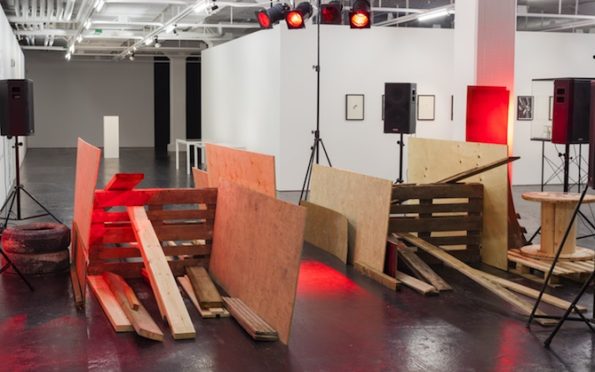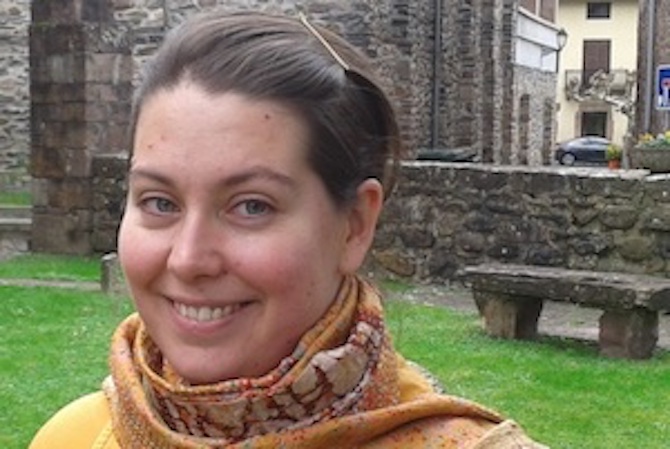Search
To search for an exact match, type the word or phrase you want in quotation marks.
A*DESK has been offering since 2002 contents about criticism and contemporary art. A*DESK has become consolidated thanks to all those who have believed in the project, all those who have followed us, debating, participating and collaborating. Many people have collaborated with A*DESK, and continue to do so. Their efforts, knowledge and belief in the project are what make it grow internationally. At A*DESK we have also generated work for over one hundred professionals in culture, from small collaborations with reviews and classes, to more prolonged and intense collaborations.
At A*DESK we believe in the need for free and universal access to culture and knowledge. We want to carry on being independent, remaining open to more ideas and opinions. If you believe in A*DESK, we need your backing to be able to continue. You can now participate in the project by supporting it. You can choose how much you want to contribute to the project.
You can decide how much you want to bring to the project.

The first model that inspired “The society without qualities” in the Tensta Konsthall, Stockholm, was constructed in 1968 in the Moderna Museet of the same city and was called “The Model. A Model for a Qualitative Society”(it’s been referred to before). It was a project by the artist Palle Nielsen, who for years had experimented with the pirate construction of playgrounds in marginal, urban spaces in Copenhagen.
In that case, various factors aligned (the presence of the eccentric and innovative director of the museum, Pontus Hultén, the fact that another exhibition was delayed, along with a strong art movement protesting against how the city was being urbanised) to enable the model to come into existence: an enormous play room with paint, tools, costumes and all the material you could imagine, that kids could use however they wanted without any form of direction from educators or museum employees. Parents could enter and watch, but not play or intervene.
The model talked about creating a new society – one where children scale the posts, with gorilla masks or dressed as apache Indians, one based on less social control and the capacity of children to invent, construct and experiment. A utopian vision, one very much linked to the international scene of 68, when they wracked their brains dreaming about how to construct a better society.
Some works in the current exhibition return to the idea of looking at history and the world through child’s play. For example the videos by Sharon Lockhart that show how girls and boys in their games appropriate post-industrial and desolate places in Poland, converting them into useful social spaces. But also the risks of social experiment: Joanna Lombard contrasts the present and the past with the memories she imprints on the abandoned house in the country where she grew up as part of a hippy commune, in an environment that for a little girl was in some cases traumatic.
We could say that there is no model without utopia. A model is an example of how to move towards absolute perfection, towards a better world. Often, radical proposals that subverted the status quo, to begin again. This is how the dichotomy between the impossibility of utopia and the need for illusion of it to carry on is presented. And the reality that some utopias, when carried out, border on a nightmare, until at times they fall completely on to this side. If the model by Palle Nielsen sought a society with qualities, the exhibition confronts us with a present that isn’t sure if it has lost these qualities or if it ever had them.
Some pieces in the current exhibition look critically at the reality of the 70s that is clearly far from utopian. For example, the pieces by Charlotte and Sture Johannesson, who in the 70s were key figures in the critique of the supposed democracy of Sweden. One of their pieces, On Germany – In Time, an installation with images and tapestries about Ulrike Meinhof, was exhibited for only two days in 1976 before being removed by the authorities. The model of No-Stop City by the architects Archizoom Associati, takes modernist urban models to an extreme, proposing extremely isolated and anti-aesthetic places.
The research project “The new model” by the curator Lars Bang Larsen, that encompasses this exhibition, looks on the other hand towards a model without utopia: the social model which we configure to today, heir to the ideologies of the 70s and 80s, but which observes them from the same distance as prehistoric paintings. Who knows if some of the little kids who painted their faces with green acrylic paint and a brush, in fancy dress in the Moderna in 68, are now in charge of directing the FMI? The very aesthetic of the exhibition is reminiscent of the avant-garde, of political activism and the barricade. It looks towards the legacies of times past, from a marginal district of Stockholm, Tensta, that though it can’t assure us any past time was better, it also wouldn’t give a penny for the future. In fact, the feel of the exhibition is ambiguous: the introductory text talks of how one might move forward, towards new models without a past, without dragging along so much baggage. But in the exhibition it ends up being impossible to let go of this ballast, to move forward. It endeavours to assassinate nostalgia but she turns in her grave. And maybe no, any previous period wasn’t better, but without a doubt it was, and we can’t cause it not to have been.

For Haizea Barcenilla art doesn´t seem to exist on its own, but as being interlinked with various social systems, embedded between ideologies and forms of looking, included in exchange networks of, buying and selling, production and exhibition. When she writes criticism, she likes to extend her object of study as much as possible, understanding it through being part of it, considering what her position is. For her, it is impossible to see art without everything else, and everything else without art. And sometimes she manages to interweave the two sides.
"A desk is a dangerous place from which to watch the world" (John Le Carré)